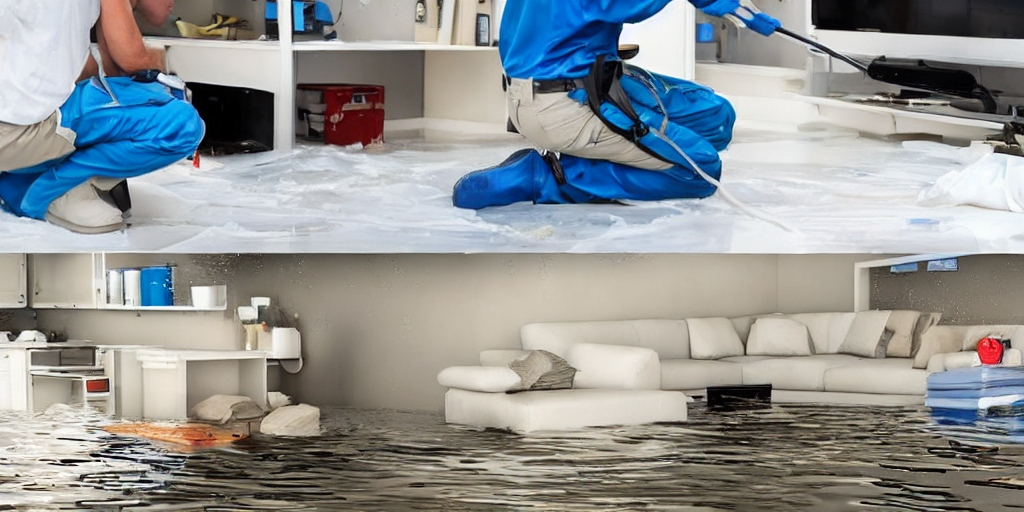Water damage in homes can be a costly and distressing ordeal, necessitating swift and effective solutions. Understanding the various aspects of water damage services, from dealing with immediate concerns to comprehensive restoration, is crucial for homeowners. In this guide, we’ll explore common questions surrounding water damage, the best practices for dealing with it, and the role of professional residential water damage services.
Can Water Damage be Expensive?
Water damage services are often sought after homeowners realize the potential financial implications of untreated water damage. The costs associated with water damage can escalate rapidly, affecting not only the structural integrity of the property but also personal belongings. From damaged furniture to compromised electrical systems, the expenses can add up quickly.
When assessing the expenses related to water damage, it’s essential to consider not only the visible damage but also the potential for mold growth. Mold can thrive in damp environments, posing health risks and necessitating additional remediation efforts. Investing in timely and professional water damage cleanup can mitigate these risks, ultimately saving homeowners from more significant financial burdens.
Also Read: Navigating Water Damage Services: A Comprehensive Guide to Restoration
How Do You Deal with Water Damage in Your Home?
Dealing with water damage in your home requires a systematic approach to ensure a swift and effective response. The initial steps are crucial in preventing further damage and minimizing the overall impact.
- Identify and Stop the Source: The first step is to identify the source of the water intrusion and take immediate action to stop it. This could involve shutting off the main water supply, fixing a leaking roof, or addressing a burst pipe.
- Remove Standing Water: Promptly removing standing water is vital to prevent additional damage and mold growth. Utilizing professional water removal services ensures thorough extraction, even from hard-to-reach areas.
- Assess and Document Damage: Documenting the extent of the damage is essential for insurance claims and restoration purposes. Take photographs and make a detailed list of affected areas and items.
- Begin Drying and Dehumidification: Proper drying and dehumidification are crucial in preventing mold growth. High-quality dehumidifiers and industrial-grade drying equipment are often employed during this phase.
How Do You Remove Water Damage from a House?
Removing water damage from a house is a multifaceted process that involves a combination of cleaning, restoration, and preventive measures.
- Professional Water Damage Restoration Companies: Engaging the services of water damage restoration companies is often the most effective way to ensure a comprehensive restoration. These professionals have the expertise, equipment, and experience to address both visible and hidden water damage.
- Thorough Cleaning and Disinfection: All affected surfaces and items must undergo thorough cleaning and disinfection. This helps eliminate contaminants and reduces the risk of health issues for the occupants.
- Structural Repairs: Addressing structural damage is a crucial aspect of the restoration process. This may involve repairing or replacing damaged walls, flooring, and other structural elements.
- Mold Remediation: If mold is detected, professional mold remediation services are essential to ensure complete removal and prevent future growth.
What Happens When Water Gets in Your Walls?

When water infiltrates the walls of a home, it can lead to a myriad of issues. The porous nature of building materials allows water to be absorbed, resulting in hidden damage that may not be immediately visible.
- Structural Damage: Prolonged exposure to water can weaken the structural integrity of walls, leading to potential collapse or compromise.
- Mold Growth: The enclosed spaces within walls provide an ideal environment for mold growth. Mold can proliferate rapidly and pose health risks to occupants.
- Electrical Hazards: Water infiltration can compromise electrical systems within walls, increasing the risk of electrical hazards such as short circuits and fires.
Addressing water within walls requires a thorough assessment by professionals specializing in residential water damage restoration. They use advanced techniques such as infrared imaging to identify hidden moisture pockets and ensure a comprehensive restoration process.
Also Read: Understanding the Importance of Water Damage Services for Your Home
Conclusion
In conclusion, understanding the importance of timely and professional water damage services is paramount for homeowners facing water-related issues. From the initial identification of the source to the comprehensive restoration of affected areas, a systematic and proactive approach is key. By engaging the services of reputable water damage restoration companies, homeowners can mitigate the financial, structural, and health-related risks associated with water damage. Remember, swift action is the cornerstone of effective water damage mitigation and restoration.










